-
Flexible electronics to make night vision more accurate, easier to use
For soldiers and first responders, having accurate, high-resolution imaging capabilities may mean the difference between success and failure; electrical and computer engineers set out to make night vision more accurate and easier for soldiers, pilots, and first responders to use
-
-
Comparing boost-phase to non-boost-phase ballistic missile defense
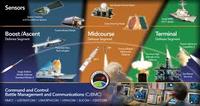
An expert panel set forth to provide an assessment of the feasibility, practicality, and affordability of U.S. boost-phase missile defense compared with that of the U.S. non-boost missile defense when countering short-, medium-, and intermediate-range ballistic missile threats
-
-
Four-legged robotic mule now voice-controlled
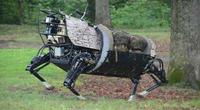
DARPA researchers demonstrated new advances in the Legged Squad Support System (LS3) four-legged robot’s control, stability, and maneuverability, including “Leader Follow” decision making, enhanced roll recovery, exact foot placement over rough terrain, the ability to maneuver in an urban environment, and verbal command capability
-
-
Maintaining robust communications in congested and contested environments
Radios are used for a wide range of tasks, from the most mundane to the most critical of communications, from garage door openers to military operations’ as the use of wireless technology proliferates, radios and communication devices often compete with, interfere with, and disrupt the operations of other devices; a new DARPA challenge is looking for innovative approaches that ensure robust communications in such congested and contested environments
-
-
U.S. Defense Secretary signs order to deploy anti-missile units in Turkey
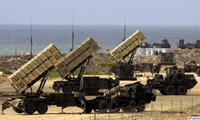
Secretary of Defense Leon Panetta on Friday signed an official deployment order to send 400 American military personnel as well as two Patriot air defense units to Turkey as the cross-border tensions between Turkey and Syria have increased
-
-
Deployable RF data backbone which matches fiber optic capacity
DARPA envisions 100-Gigabit per second RF communications link between airborne and ground assets; the goal is for the data link to achieve a range greater than 200 kilometers between airborne assets and a range greater than 100 kilometers between an airborne asset (at 60,000 feet) and the ground
-
-
High Russian official: Assad losing the ground war
The Assad regime does not have many friends left, and yesterday one of them admitted that Assad was losing the war; Mikhail Bogdanov, the deputy foreign minister of Russia, said the regime faced possible defeat to the rebels, adding with unusual frankness for a diplomat: “One must look facts in the face”
-
-
U.S. Navy scientists honored for significant portfolio of newly patented discoveries and inventions
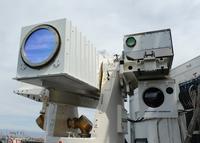
U.S. Navy scientists and engineers in 2012 once again had the world’s most significant government portfolio of newly patented discoveries and inventions, according to a November report published by the Institute of Electrical & Electronics Engineers (IEEE)
-
-
Climate change, water shortage play only secondary role in causing conflict – at least so far
Intelligence services and militaries around the world have been talking about, and preparing for, the danger of “water wars” and about climate change as a threat to national security; the results of an EU-funded research project, however, found that such discourses oversimplify a complex reality; climate and water resource changes are important, but play only a secondary role — at least for the time being — in the causation of conflict and insecurity compared to political, economic, and social factors
-
-
Top U.S., Canadian officials meet to discuss quickening pace of Arctic changes

One manifestation of global warming is the accelerating pace of Arctic ice-cap melting; the U.S. Navy Arctic Roadmap, authored by the Navy’s Task Force Climate Change, notes that, “Because the Arctic is primarily a maritime environment, the Navy must consider the changing Arctic in developing future policy, strategy, force structure and investment”; top U.S. and Canadian officials meet to discuss the implications of the rapidly melting arctic ice
-
-
Syria military launches Scud missiles at rebels
Facing growing political isolation, deteriorating economic conditions, and military setbacks, the Assad regime is escalating the level of violence in its war against the opposition; the three latest weapons the regime used in its effort to hold off the rebels: Scud missiles, cluster bombs, and incendiary munitions; yesterday, Pakistan became the 69th country to close its embassy in Damascus
-
-
A new tool supports humanitarian demining
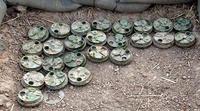
Landmines and other abandoned explosive ordnance are part of sad legacy of many conflicts; these devices can remain active during decades threating humans in the affected areas and depriving them of their lands and resources; today, a huge part of these tasks of humanitarian demining are still conducted by using hand-held detectors, particularly, metal detectors, though other detectors are being introduced gradually
-
-
Terahertz waves for explosives detection
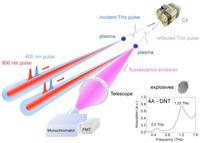
The chips generate and radiate high-frequency electromagnetic waves, called terahertz (THz) waves, which fall into a largely untapped region of the electromagnetic spectrum — between microwaves and far-infrared radiation — and which can penetrate a host of materials without the ionizing damage of X-rays; when incorporated into handheld devices, the new microchips could enable a broad range of applications in fields ranging from homeland security to wireless communications to health care, and even touchless gaming
-
-
Syrian rebels trained in handling, securing chemical weapons
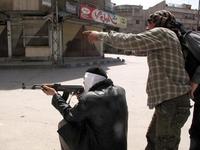
The United States and some of its European have issues contracts to defense contractors to train Syrian rebels on how to identify, handle, and secure chemical weapons stockpiles in Syria; some of the training is done in Jordan, but some of the contractors are already inside Syria, where they, and U.S. intelligence operatives, are working closely with friendly rebel groups to monitor Syria’s chemical weapons production and storage sites
-
-
Marine robot completes 9,000 mile cross-Pacific journey, setting new world record
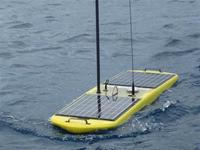
A wave-powered robot completes a 9,000 nautical mile (16,668 kilometers) scientific journey across the Pacific Ocean to set a new world record for the longest distance traveled by an autonomous vehicle
-
More headlines
The long view
AI-Controlled Fighter Jets May Be Closer Than We Think — and Would Change the Face of Warfare
By Arun Dawson
Could we be on the verge of an era where fighter jets take flight without pilots – and are controlled by artificial intelligence (AI)? US R Adm Michael Donnelly recently said that an upcoming combat jet could be the navy’s last one with a pilot in the cockpit.
Autonomous Weapon Systems: No Human-in-the-Loop Required, and Other Myths Dispelled
“The United States has a strong policy on autonomy in weapon systems that simultaneously enables their development and deployment and ensures they could be used in an effective manner, meaning the systems work as intended, with the same minimal risk of accidents or errors that all weapon systems have,” Michael Horowitz writes.
“Tulsi Gabbard as US Intelligence Chief Would Undermine Efforts Against the Spread of Chemical and Biological Weapons”: Expert
The Senate, along party lines, last week confirmed Tulsi Gabbard as Director of National intelligence. One expert on biological and chemical weapons says that Gabbard’s “longstanding history of parroting Russian propaganda talking points, unfounded claims about Syria’s use of chemical weapons, and conspiracy theories all in efforts to undermine the quality of the community she now leads” make her confirmation a “national security malpractice.”
